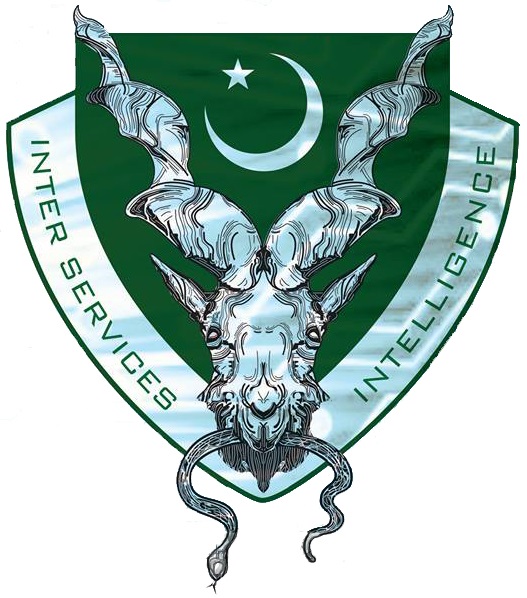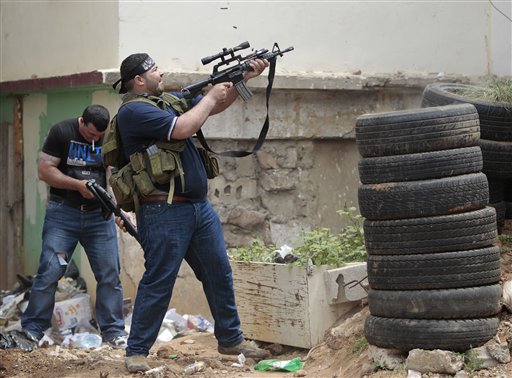The previous article identified a need for a long endurance air-borne intelligence, surveillance and detection capability. While Canada doesn’t have long-endurance unmanned aerial vehicles (UAVs), it does have manned aircraft that can fulfil a very similar function, the P-3 MPA/ ISR aircraft (known as the CP-140 Aurora in Canadian service). Two such aircraft are already conducting operations over Iraq. Originally designed for maritime patrol, the CP-140 provides some of the capabilities of long endurance UAVs. It can fly over northern Iraq for well over a dozen hours, gather imagery and signals intelligence, and provide targeting information to allied aircraft so they can attack against IS targets.
Such use of the CP-140 is not unprecedented. Canada used the aircraft over Afghanistan and, more recently, over Libya during Operation MOBILE where they identified targets for Canadian and allied combat aircraft. Canada can go a step further and quickly modify the CP-140s to be capable of using a laser designator to guide laser-guided munitions from other aircraft. France has done this in Mali with its Atlantique 2 MPAs. Pakistan has also been using its P-3, MPA aircraft overland for locating and bombing insurgents.

The P-3/CP-140 has five hardpoints on each of its wings and also has an internal bomb bay capable of carrying munitions on eight hardpoints. If modified to launch laser and GPS guided munitions, Canada’s CP-140s could fly over northern Iraq for long durations, guide and launch their own munitions at IS targets, as well as locate and provide targeting data on IS targets for other aircraft. In an ideal world with infinite resources and no ethical or political qualms, this could be more efficiently accomplished through the use of armed on unarmed UAVs, but the CP-140 is the most suitable aircraft Canada has in its arsenal at present.
While the CP-140 appears to be a saviour, it has limitations. Canada’s fleet is small given the string of missions it conducts in and outside of Canada. Most importantly, the fleet patrols Canada’s maritime approaches for pollution, terrorist activity, criminal activity, and foreign naval forces – including submarines. The main problem is that the CP-140 fleet is aging, even after factoring in a life-extension upgrade that will keep the aircraft available until 2030. Its replacement has been delayed, and now ‘shelved.’ Furthermore, the fleet is distributed across Canada’s vast expanse, meaning that only a handful of aircraft can be deployed abroad at any time. Even then, the number of aircraft deployed and the long duration missions mean that Canada will be hard pressed to keep even one CP-140 orbit (i.e., one aircraft constantly airborne) for anything other than a short period of time. Finally, while the CP-140 can be effectively used to cover a large area and provide targeting data to launch its own or guide other aircrafts’ munitions, it does so at risk to both aircraft and crew.
In order to mitigate that risk, Canada ordered six Large Aircraft Infrared Countermeasures (LAIRCM) from the American defence giant Northrop Grumman in August 2014. The LAIRCM is a counter-measure system designed to protect large, slow moving aircraft like the CP-140 from shoulder-launched anti-aircraft missiles (MANPADs), the same type of missiles now widely in use in Syria and Iraq by insurgent forces, including IS. It is unclear as to whether any Canadian CP-140 has had the LAIRCM installed as of yet, whether the aircraft with the systems potentially installed are those sent to Kuwait (Canada purchased fewer LAIRCMs than it has CP-140s), or whether the government put in an urgent request to the United States to rapidly install some LAIRCMs from existing U.S. military stocks. Regardless, without the LAIRCM, the CP-140 is a large, lumbering aircraft that can be easily detected and targeted from the ground (the author bases this on personal experience in the Middle East). The CP-140s dark grey paint does it no favours in the dry cloud-barren sky of the Middle East. As such, the CP-140s flying over Iraq will be forced to fly above MANPADs altitude limits, meaning the CP-140s will be flying around approximately 15,000 feet.

While the CP-140 is in Canada’s current arsenal, Ottawa has recently announced it is looking for a manned aircraft capable of and dedicated to carrying out the manned intelligence, surveillance and reconnaissance (ISR) mission. Ottawa is seeking four aircraft outfitted with signals intelligence and ground surveillance/detection systems. Once in service, these would complement the CP-140 in the overland ISR role. Based on publicly known technical specifications, the system (and likely the aircraft as well) will probably be one of a handful of American offerings, such as MC-12W Liberty used by the U.S. Air Force. The MC-12W provides similar capabilities to what a long-endurance intelligence gathering UAV but, unlike the UAV and the CP-140, cannot carrying munitions. As such, it is purely an ISR aircraft.
Alternatively or, perhaps, additionally, Canada could potentially modify some of its numerous C-130 Hercules heavy transport aircraft to carry a surveillance, targeting and munitions payload. The United States Marine Corps has done that with its C-130 transport/tankers in the Harvest Hawk program. Such a converted Canadian C-130 will provide a capability similar to that provided by the CP-140 overland. Moreover, the aircraft can be temporarily converted for such missions and then rapidly reconverted for cargo missions.
The core of Canada’s contribution to the fight against the IS group in Iraq are the 6 CF-18s. While a glamorous undertaking, these fighter aircraft are not suited for the task at hand. Deploying fighter aircraft results in redundant capabilities that are ineffective in fighting IS in Iraq. What the mission needs is a long-range manned or unmanned aircraft capable of carrying a capable ISR payload and, ideally, a useful combat payload of guided bombs. The next article will discuss how Canada might fill this gap.




